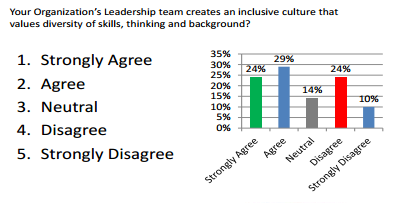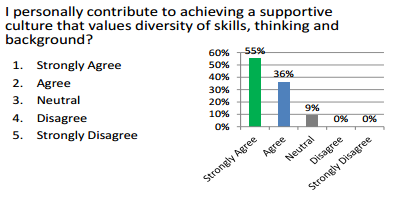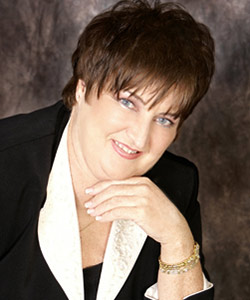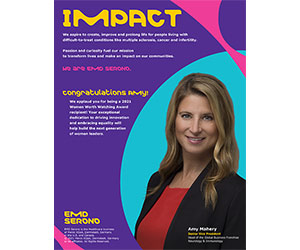Part I of the series The Illusion of Inclusion
By Helen Turnbull, PhD
What is the big deal about inclusion? It is easy to include others. All you have to do is make sure you actually notice people, smile at them, acknowledge them, say hello, make them feel good about themselves, include them in your conversation, seek their opinions, reassure them that you like them, actively demonstrate you are listening to them, help them to feel validated, and reassure them that their ideas have value … hmm!
This is beginning to sound challenging!
If you are like me, then perhaps there are people in your life for which you can easily check every “inclusion” box. Then there are others in your peripheral vision that you simply don’t see, and some you choose not to see, and some you don’t want to see, or even some you wish didn’t exist.
OK, so let’s admit it; being human really means that being inclusive has caveats. It is easy to be inclusive if I like you; it is easy to be inclusive if I agree with you, or more important, if you agree with me; it is easy to be inclusive if I have some affinity with you; it is also easy to be inclusive if I need something from you or if you need something from me that I am willing to share.
See? This is getting messy and we haven’t even scratched the surface. As well-intentioned people, we all want to believe that we are inclusive of others and that we would conceptually support the idea of becoming more inclusive.
Diversity and Inclusion
The words “Diversity” and “Inclusion” are often used in the same sentence as if they are inextricably linked, but, in fact, diversity is the mix and inclusion is the effort that it takes to make the mix work. You may have the right ingredients to bake a cake, but that does not guarantee the cake will be edible. Likewise, having a diverse workforce does not guarantee that you understand how to make that mix work or how to unlock its full potential.
Creating an inclusive environment is complex. It requires effort and that we first unpack the complexity before we can begin.
Let’s return to my cake analogy. If I hand you a carton of sugar, a bag of flour, a couple of eggs, and a stick of butter, you may intuitively figure out that you could bake a cake. On the other hand, they may stay in your mind as separate and disparate objects with no vision that a cake is possible. If I hand you a box of unsalted black beans, two eggs, cocoa powder, coconut milk, and agave nectar I suspect it would not be so intuitively obvious that you could make a chocolate cake. If I then added two ripe avocados, coconut water, unsweetened cocoa powder, and a bottle of vanilla essence, my guess is that you would look at me strange, and would never be able to imagine that these ingredients would make a divine chocolate mousse, which could be eaten alone or spread over the black bean chocolate cake.
These alternative recipes offer new and exciting possibilities for creativity, but only if we are open to allowing differences to flourish. What are we missing when we maintain the status quo…when we remain stuck in old paradigms…when we operate from a mode of assimilation…when we allow our blind spots and unconscious biases to block our vision of a more inclusive organization?
Over the years of working in the field of global inclusion, diversity, and unconscious bias, I have noticed an interesting phenomenon. When I ask people if their leaders contribute to creating an inclusive environment, the results typically look like this:

When I ask people about their personal contribution to creating an inclusive environment, the results typically look like this:

It seems that we all think we are doing better than everyone else at being inclusive. That is our first blind spot. If we believe it is other people and not us, we will always be waiting for others to see the light, while not seeing the impact of our own unconscious biases and shortcomings. Catching our propensity for affinity bias, controlling our ego needs, admitting our resistance to change, and managing our own blind spots are all part of the journey. No one gets to be a phenomenological exception; we all have a piece of the story. So let me leave you with a few questions to ponder:
- How inclusive are you really?
- How do your personal biases impact your ability to be inclusive?
- How do your blind spots impact the quality of your day-to-day decisions?
- How do you know that you are really being objective?
- Who is in your In-Group?
- Who do you not notice at work?
- How do you know when someone is a “good fit”?
- What criteria are you using?
- What do you mean when you say “We have a meritocracy”?
- How can you be sure there is a meritocracy?
In the next edition of this five-part series, I will begin to fill in the blanks on the Inclusion Complexity Model and reveal the intricacies and dynamics that might be getting in the way of us achieving our professed goal of creating an inclusive workplace.
The Illusion of Inclusion: Helen Turnbull, PhD

Helen Turnbull, PhD
Dr. Helen Turnbull is the CEO of Human Facets LLC and a world recognized thought leader in global inclusion and diversity. She is a member of the Academy of Management, American Psychological Association, American Sociological Association and American Society for Phenomenology; The Neuro-Science Institute for Leaders and the OD Network. Her latest book is “Blind spots: A conversation with Dr. Turnbull about Unconscious Bias”. In May 2013, she spoke at TEDx on “The Illusion of Inclusion” and has recently developed a new model on the complexity of embedding an inclusive workplace culture.







Helen,
Love the analogy of baking a cake and/or a mousse to demonstrate the difference between the D and the I. Thanks!
Tom
Great discussion points on inclusion, looking forward to the next edition.
Helen,
Great article. You have the ability to take a difficult subject matter and explain it in an easy-to-understand method without betraying the complexity of the subject.
Great introduction! I especially like the true diversity when you bring avocados into the mousse.